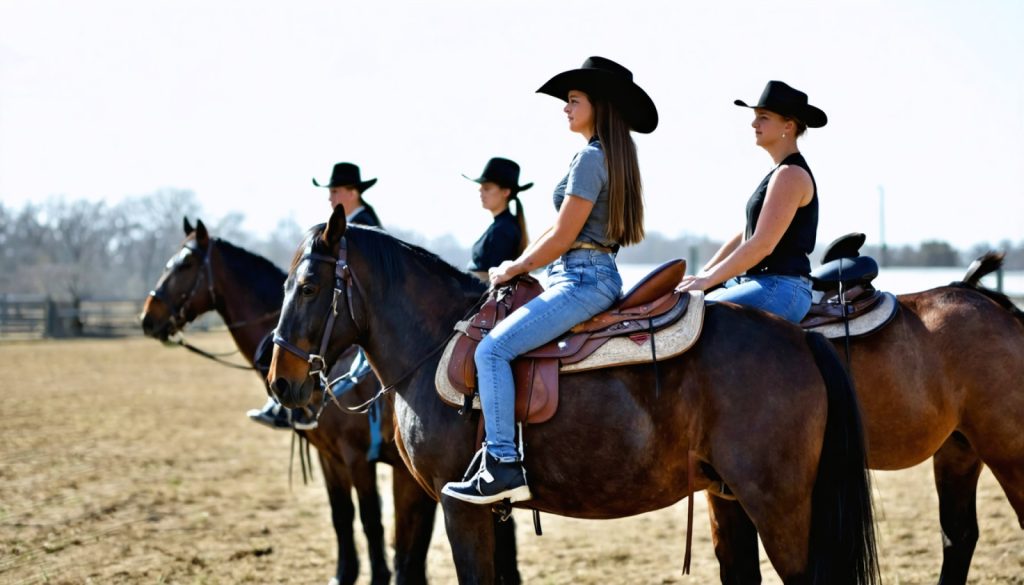
- The “Saddle Up and Donate” event at Arkansas Tech University focuses on the vital cause of blood donation, aiming to save lives through community involvement.
- Held from April 15 to 17 at Baswell Techionery, the drive operates efficiently from 10 a.m. to 3 p.m., welcoming students, faculty, and staff to participate.
- Participants can schedule appointments online, by phone, or walk-in, ensuring flexibility and convenience for busy schedules.
- Donors receive a T-shirt as a symbolic token, serving as a memento and a conversation starter to inspire further action.
- The event underscores the profound impact each individual can make, as one pint of blood can save up to three lives.
- By fostering a spirit of camaraderie and generosity, the event builds a stronger, healthier community, reinforcing the power of collective action.
On the vibrant campus of Arkansas Tech University, the air buzzes with a palpable energy of compassion and community. A gathering aimed not at celebration or competition, but at saving lives, takes center stage. At the heart of this remarkable event, poignantly dubbed “Saddle Up and Donate,” lies the mission of tapping into the life-giving power of blood donation.
Every year, thousands find themselves in dire need of blood due to medical conditions or emergencies. Recognizing this, a group of committed individuals from the Our Blood Institute invites students, faculty, and staff in Russellville to rally together for an essential cause. From April 15 to 17, Baswell Techionery transforms into a beacon of hope and healing. In room 202, a procession of donors steps forward, each contributing to a shared goal of health and recovery.
With seamless efficiency, the drive operates from 10 a.m. to 3 p.m. over these three days, offering both an opportunity and a gentle reminder of the power lying within each of us. The atmosphere is one of camaraderie and warmth. As participants wait for their turn, the room buzzes with stories and laughter, each act of donation underscored by a simple yet profound truth: one pint of blood can save up to three lives.
Ensuring accessibility, organizers have streamlined the process. Prospective donors can schedule their appointments online, call in, or embrace spontaneity with a walk-in visit. Such flexibility not only acknowledges busy schedules but also reinforces the notion that saving lives need not derail one’s day.
Further sweetening the experience, donors depart with a symbolic token—a T-shirt—serving as both a memento and a conversation starter. Each fabric thread weaves a narrative of collective action, inspiring others to ponder their potential role in this life-affirming mission.
The impact of a robust turnout at this event cannot be understated. It traces back to a fundamental principle: each individual holds the capacity to make profound changes in the world. Through a simple act of sitting, waiting, and giving, the participants actively shape brighter destinies for countless unseen faces.
As the Boone County sun sets each day of the drive, it backlights a powerful message to the world: By coming together in kindness and generosity, we build a stronger, healthier community. It implores all to heed their part, because in doing so, they etch a legacy of hope and healing that extends far beyond the university’s halls.
Unleash the Power of Good: How Blood Donation Drives Can Transform Lives
The Critical Importance of Blood Donation
Blood donation is an essential community service with far-reaching impacts. According to the Red Cross, the U.S. requires a blood supply of around 36,000 units every day to cater to all medical emergencies. Blood is crucial for surgeries, cancer treatment, chronic illnesses, and traumatic injuries ([Red Cross](https://www.redcross.org)).
Benefits and Real-World Use Cases
1. Life-Saving Potential: One pint of blood can potentially save up to three lives. In critical situations such as accidents or surgeries, the availability of blood can be the difference between life and death.
2. Community Health Boost: Engagement in blood donation drives, like “Saddle Up and Donate” at Arkansas Tech University, strengthens community bonds. Participating in such events is a demonstration of communal support and empathy, encouraging a culture of altruism and care.
3. Donor Health Benefits: Donating blood has health benefits for donors as well. Regular donations can help maintain a healthy heart and liver, reduce the risk of cancer, and even promote the production of new blood cells.
How to Prepare for Blood Donation
– Stay Hydrated: Drink plenty of fluids before donating to ensure optimal blood flow.
– Healthy Eating: Avoid fatty foods and focus on iron-rich meals a few days before donation.
– Rest Well: Ensure a good night’s sleep before participating in the blood drive.
– Bring ID: Donors must bring necessary identification for the donation process.
Insights & Predictions
The demand for blood donation is only expected to increase with an aging population and advancements in medical procedures. Initiatives like those hosted by Arkansas Tech University are vital to sustaining supply.
Controversies & Limitations
Despite its merits, blood donation faces hurdles like misconceptions about eligibility criteria, fear of needles, and logistical challenges in organizing drives. Some individuals are hesitant due to concerns about safety and health, but organizations ensure rigorous testing and hygienic procedures.
Actionable Recommendations
1. Schedule Regular Donations: Establish a routine for blood donation. Every 56 days is a typical interval for whole blood donations.
2. Spread Awareness: Utilize social media platforms to share experiences and encourage more participants to join future drives.
3. Volunteer: Engage actively by volunteering at blood drives or donating to blood banks like the [American Red Cross](https://www.redcross.org).
4. Be Informed: Stay up-to-date on upcoming drives and the need for specific blood types within your area.
By donating blood, individuals not only contribute to life-saving medical operations but also play a crucial role in building resilient communities. Each act of giving writes a collective story of hope and healing. For more information or to find local donation opportunities, visit the [Red Cross](https://www.redcross.org) website for details.



